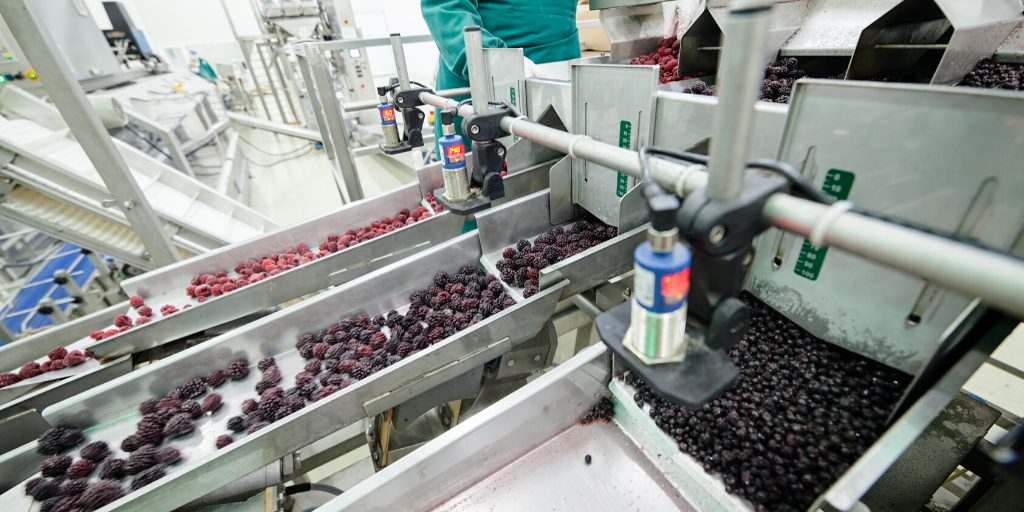
Common Hazards in Food Processing Plants
The food processing industry is vital to our national and world economy and is not without its health and safety hazards. Recognizing these hazards and implementing corresponding controls will help promote workplace safety.
Common hazards include:
Noise
Machinery in food processing plants is noisy. The loud noise can inhibit clear communication among workers, increasing the risk of injury. It can also cause long-term hearing loss.
According to the Bureau of Labor Statistics, “Hearing loss rates are almost twice as high in food production than manufacturing overall, with some sectors particularly noisy. Workers in breakfast cereal manufacturing, for example, experience hearing loss at a 30.9 rate. Sugar production workers have a 33.2 rate, largely driven by the beet sugar segment’s 66.4 cases per 10,000 full-timers. Animal slaughter excluding poultry is even higher, at 68.2. Frozen fruit, juice and vegetable employees have a 46.1 rate.”
Proper signage, clearly delineated job tasks and hearing protection can help protect workers from noise-related job hazards.
Slips, trips and falls
The Bureau of Labor Statistics also reports that slip and fall injuries occur to 30.9 of 10,000 workers in the food industry and to 28.5 of 10,000 workers in the beverage industry.
OSHA standard 29 CFR 1910.22 states requirements for a clean workspace:
Floors must be clean and dry whenever possible.
Employers must provide employees with dry places to stand during wet processes.
Employers must provide proper drainage for water on the floor.
Regular inspections of floors are required.
Machinery
Machine-related incidents cause over 700 fatalities and 2,500 injuries in the U.S. every year. From conveyors to tube systems, from sterilizers to pressure vessels, food processing machinery is powerful and must be operated carefully, according to best practices.


Additionally
- Employers must provide safety guards to protect workers from exposed parts.
- Machines must be properly shut down, de-energized and locked out during maintenance.
Biological hazards
The processing of animal products can lead to viral and bacterial pathogens. Controls include careful handling, processing and storing of live birds and cattle as well as limiting exposure to dust and feces.
Contaminated water
Large volumes of water are used in food processing plants. It is used for rinsing, cleaning, moving, cooling, heating, cooling, disinfecting and cleanup. Water can be contaminated by a multitude of things as there are many sources of contamination from inside and outside what’s being processed. This contamination greatly impacts food processing plants since they rely so heavily on water for so many things.
Many options exist for treating the many different water applications in a food processing plant. From incoming water, to heating and cooling, and process waters, there are different demands and regulations and requirements which must be met. One of these is disinfection. Whether the plant is using chlorine based chemistry or some other oxidizer, application technology has changed and control has gotten better. Whether it is testing, tracking or record keeping, there are new advances made all the time.
Online monitors, probes, chemical feed and testing equipment can help operators do their job and provide valuable real time process data and alarms. New on line measurement and controller capabilities can provide process data and that can reduces logging information on paper. Keeping paper logs can be challenging in a plant where water is used everywhere, and electronic data logs allow for simpler, faster graphing and tracking of trends and issues which may occur in a process. And they can provide immediate alarms for systems which fall out of regulated parameters protecting product quality.
Chemtex would be happy to discuss our water treatment options with you. We’re always standing by to respond to your questions, troubleshoot your problems, and help you build a water treatment program that is designed to maintain the safety of the product and prolong the lifespan of your equipment.



/NQA-ISO-9001-Logo-ANAB.jpg)